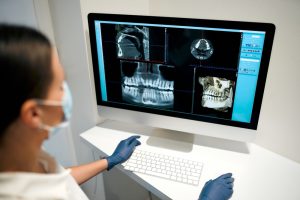Bridging the gap between industry and profession
Featured Products Promotional FeaturesPosted by: Dental Design 29th October 2023

We can all agree that dentistry is in a constant state of evolution, with clinical techniques, materials and technologies continually being developed for the benefit of the profession and patients. Manufacturers and suppliers are always looking to create new solutions that will fill gaps in the market, cater to the challenges being faced by clinicians, simplify professional workflows and improve the quality of patient care delivered.
However, this is only a success if there are strong connections between industry and profession. Products must be designed and refined with the end users – the dentist and their patient – in mind. To be fit for purpose and improve the professional and/or patient experience, manufacturers must really understand the demands faced by everyone in the dental practice. This means they must communicate with those at the coalface of dentistry and ensure that the feedback received influences the design of their solutions. The concept of user experience steering product development is not new and, indeed, has been proven to work in various sectors.[i]
For professionals on the ground, this is an important consideration when it comes to choosing which technologies and services you wish to implement in your own practice. Take intraoral scanners as an example – not all offer the same advantages or are as effective as other impression methods in specific clinical situations, so you have to choose your equipment carefully for each case. Greater confidence is afforded by only utilising solutions you know have been designed and fabricated specifically for the dental profession. This is particularly useful when considering new digital products on the market – which are often implemented in practice with varying degrees of success.
Clinical input
It is vital that the developers truly understand dentistry and its unique nuances when creating technologies specifically for the profession. There is significant merit in working with suppliers who have direct insight into the clinical situations and challenges that the product is being designed to improve or overcome. That’s why you often see clinical advisors on company boards, or practitioners getting involved with prototype development
Many of the most effective innovations hitting the market today are driven by practising dentists, researchers or academics (or a combination of all three). This means that they have first-hand experience of the issues they are trying to solve and the benefits they are attempting to deliver for colleagues and/or patients. Such invaluable clinical input can be used to ensure that the very best products are manufactured, which enhance professional workflows, save the business time and money, and, ultimately, elevate the standard of patient care delivered.
A two-way conversation
 There are many ways for companies to interact with the profession. For productive and practical product development, two-way communication is essential between the dental manufacturer and the dental team. Actively seeking feedback from the end user and listening to what they say is crucial for any manufacturer, but in a fast-paced and intricate profession like dentistry, it is even more important to implement positive change and improve experiences.
There are many ways for companies to interact with the profession. For productive and practical product development, two-way communication is essential between the dental manufacturer and the dental team. Actively seeking feedback from the end user and listening to what they say is crucial for any manufacturer, but in a fast-paced and intricate profession like dentistry, it is even more important to implement positive change and improve experiences.
Beta testing is often one of the first key stages that puts a product in front of a professional and asks them to try it in a real-life setting. This provides an opportunity to identify problems or inefficiencies and smooth them out before a solution is mass-produced and made available on the market. However, this is not where the conversation should end.
By continually encouraging comments from professionals to steer the fine-tuning or progression of products over time, companies can ensure that technologies remain relevant and optimised for modern needs. There is also evidence that two organisations working together – i.e. dental manufacturer and dental practice – can initiate new market opportunities.[ii] In dentistry, this could create even greater advantages for the profession and for patients.
Long-term relationships
The relationship established between manufacturer and profession will also be indicative of an organisation’s future collaboration with customers. A company that prioritises user feedback from the start is far more likely to be responsive to requests and suggestions once the product is available. As the clinician, this means you can have greater confidence in the quality of customer service you will likely receive, improving your experience overall with any new digital solutions you introduce to your practice.
Choosing the right partners
Of course, there are many aspects to consider when choosing a new technology to integrate within the practice, but the manufacturer is an important one. Be sure to check the science behind the product, the testing it underwent and the clinical input utilised throughout its development before you invest. In an age when new innovations are constantly reaching the profession, it is vital to choose new products carefully in order to maximise professional efficiency, patient safety and quality of care.

Stephen Claffey Managing Director of Dental Pathway™ and the Independent Dental Advisory Board™
[i] Choi, Young. (2015). Utilizing end User Input in Early Product Development. Procedia Manufacturing. 3. 2244-2250. 10.1016/j.promfg.2015.07.368.
[ii] Mengoni M, Perna A, Bevilacqua M, Giraldi L. The role of business relationships in new product development. The case of Antrox-Nel Design. Procedia Manufacturing. 2017; 11; 1351-1357








